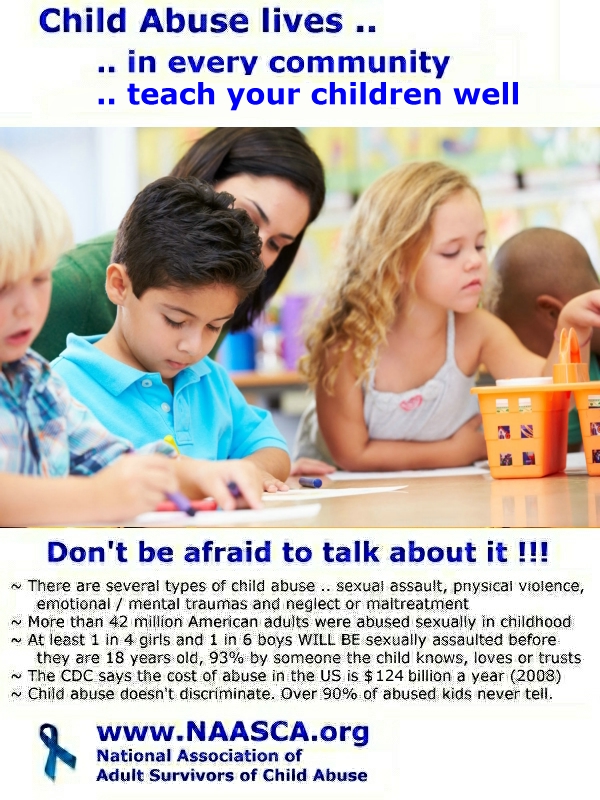 |
|
Child Abuse lives ..
...... in every community
...... teach your children well
Children must be taught about Prevention from the earliest age. They should learn the correct anatomical names for their body parts, that they have a right to body privacy, that there's a difference between "secrets" and keeping a surprise. They should be taught, at age appropriate stages, about bringing any uncomfortable feelings of any boundary violations to a trusted adult .. and if they are not happy with the response they get they should be taught to keep telling other adults until they get help that makes them conformable again.
Then, too, adults must find ways to protect young sexual abuse victims.
Parents, teachers, neighbors, coaches, and youth group leaders should learn the signs that a child may be a sexual abuse victim. Youths may seem distracted, angry, unhappy, withdrawn, or may to suffer from nightmares or other signs that something unusual is going on.
Young children may regress to earlier behaviors such as bed-wetting or thumb sucking, or they may mimic adult sexual behavior when playing with toys.
Teens may engage in self-injury, such as cutting or burning, begin drug or alcohol abuse, become sexually promiscuous, run away from home, or become depressed or anxious.
Adults can also look for signs that youth are trying to disclose the abuse.
Young people may disclose bits of information, not always in sequence, that suggest sexual abuse. They may say, for example, that a specific person makes them uncomfortable, without saying why. They may mention a “friend “who is being abused but fears telling anyone.
If the adult responds supportively, youths may start to share more about what is bothering them. Adults should listen attentively, affirm what the youth is saying, and involve a victim advocate to connect the youth with counseling and help with reporting the abuse.
Please see:
NAASCA Resources
www.NAASCA.org/010111-Resources.htm |
